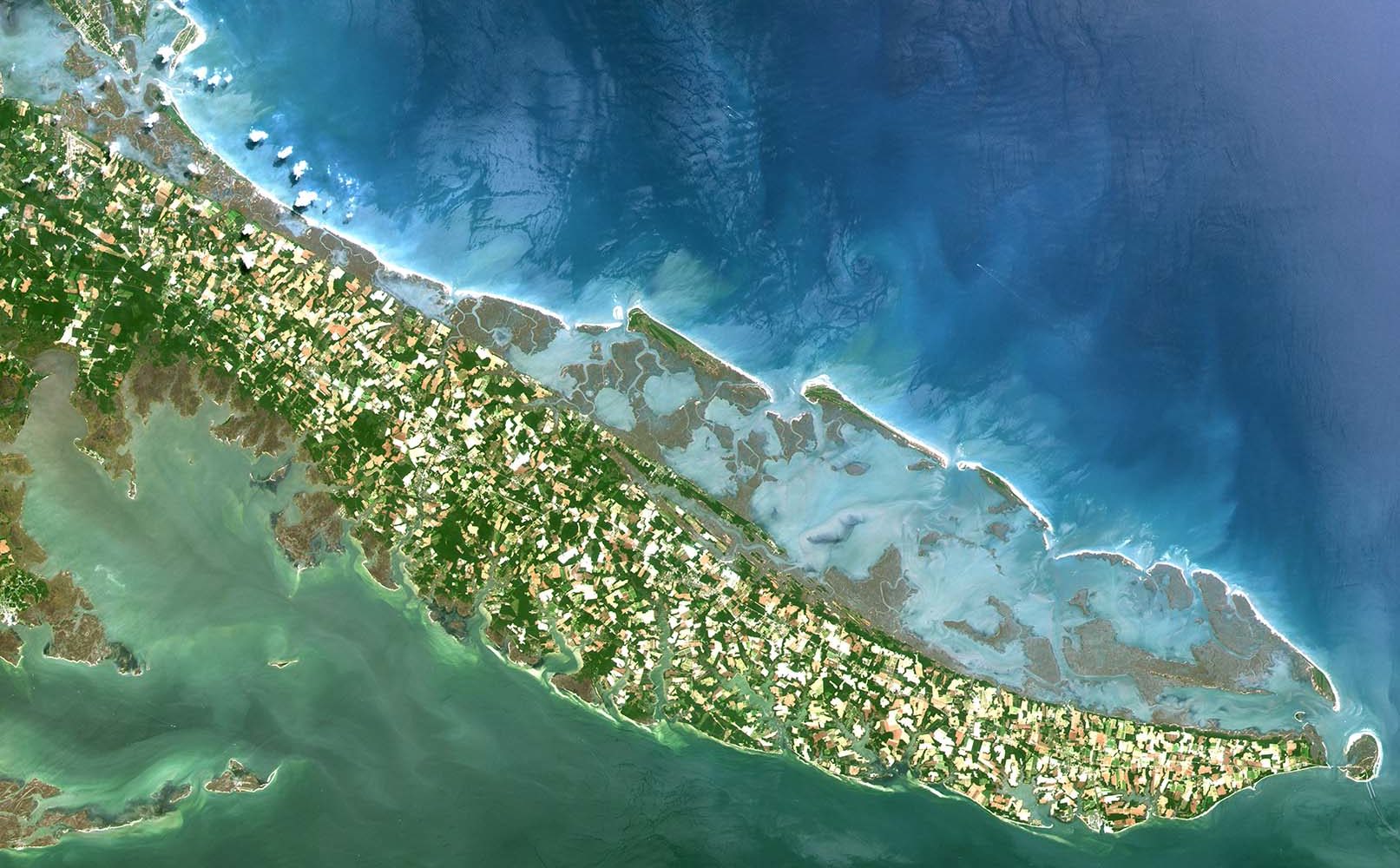
A shallow coastal bay in the Virginia Coast Reserve where the vegetation studies were modeled.
Credit: VCR LTER
Sedimentation is key to sustaining erosion-prone bay areas, like the US East Coast, where dammed rivers have reduced or stopped sediment flow to the ocean and coastal storms repeatedly create turbulent water conditions that erode and sweep sediment out to sea. While previous studies show that patches of salt marsh and seagrass independently increase sedimentation in coastal bays, researchers at the Virginia Coast Reserve LTER recently found that adjacent patches of these two vegetation types lead to even greater benefits.
In shallow coastal bays, beds of seagrass work with surrounding salt marsh communities to dissipate waves and reduce water flow into the bay, preventing salt marsh platform erosion. Smaller waves and slower water allows more sediment to settle out of the water column and replenish the ocean floor from tidal flows. Seagrass also expands the region of vegetation cover in the bay, as it is able to grow in regions where salt marsh cannot.
The research team used a combination of hydrodynamic, wave, and sediment transport models to simulate sediment transport and flow in microtidal (< 2 m tides) coastal bays of the Virginia Coast Reserve. They compared simulated results under various vegetation scenarios to determine which one promoted the most sedimentation. Across all scenarios, more vegetation meant more sedimentation, with the combination of seagrass and salt marsh trapping the most sediment of all.
Replenishing eroded bay sediment is important for coastal communities facing the threat of rising sea levels. Vegetation loss puts communities at higher risk for sea level rise-related damages. Additionally, vegetation loss leads to poor water quality, which has socio-economic consequences for coastal fisheries like those in the Chesapeake Bay.
“For old coastal bays, if we restore the submerged aquatic vegetation, like seagrass, this enhances the ecological habitat. It improves water quality and creates a unique habitat for different species like fish and crabs. It’s important for the environmental quality of bays, especially ones that have experienced a hard time with erosion in recent years,” says Dr. William Nardin, one of the study’s authors.
For shallow coastal bays that are vulnerable to storm surges and elevated suspended sediment concentrations, this new-found alliance between seagrass and salt marsh habitat better informs strategies to restore and build resiliency in the bay.
—Caitlin Swalec
Nardin W, Larsen L, Fagherazzi S, Wiberg P. 2018. Tradeoffs among hydrodynamics, sediment fluxes and vegetation community in the Virginia Coast Reserve, USA. Estuarine, Coastal and Shelf Science 210:98-108.










